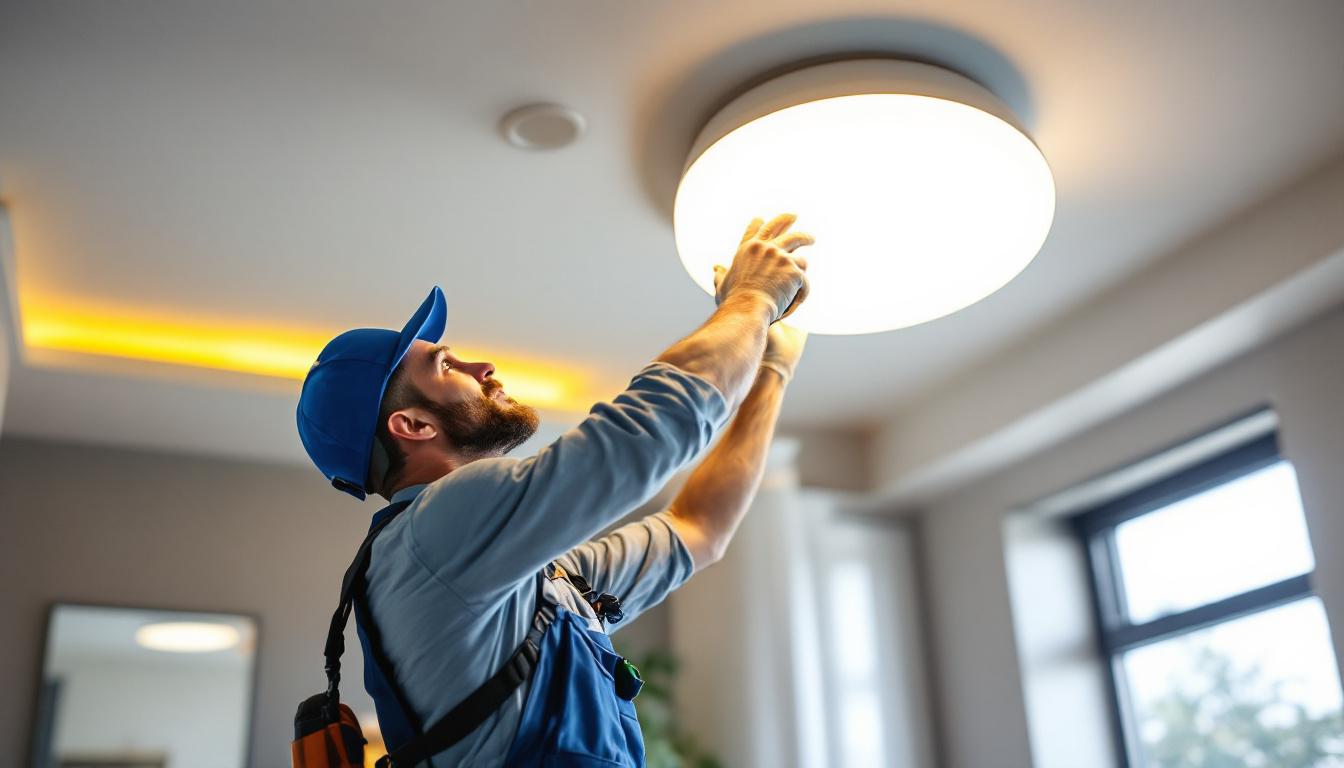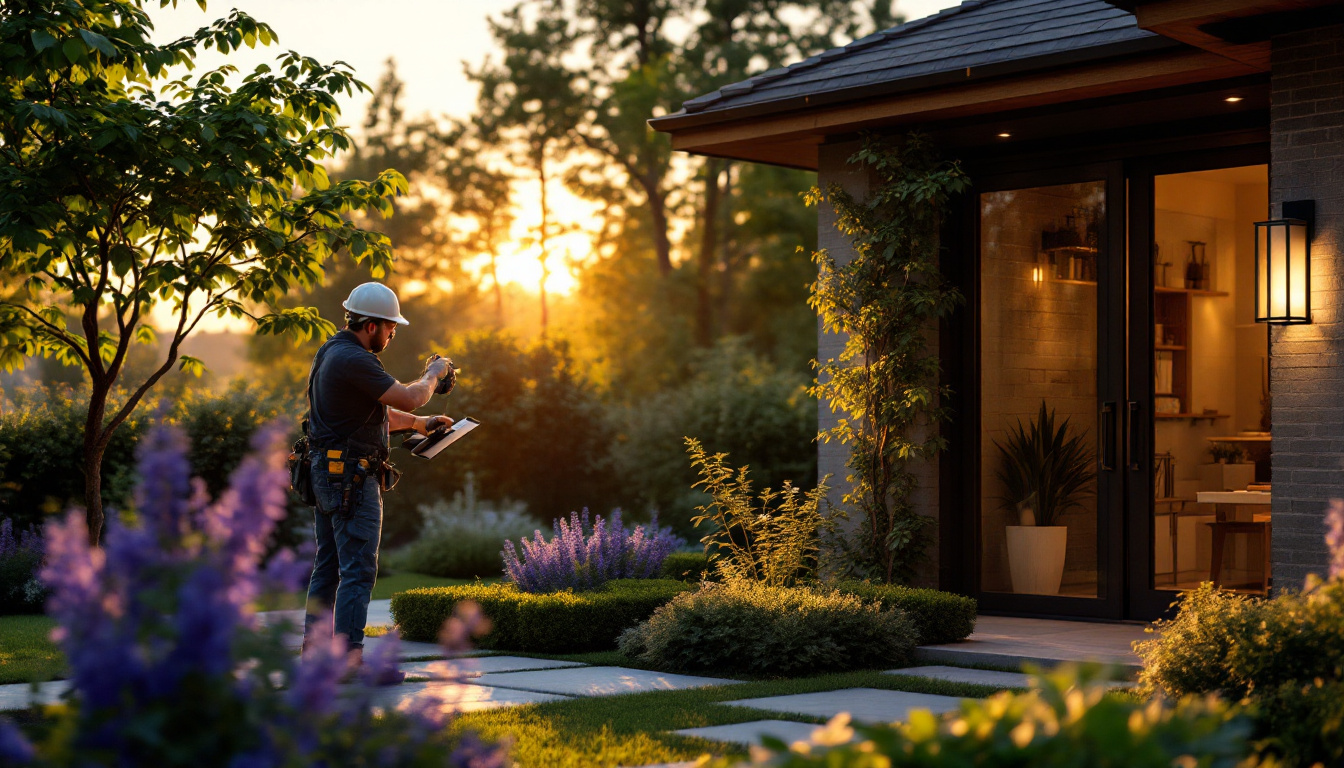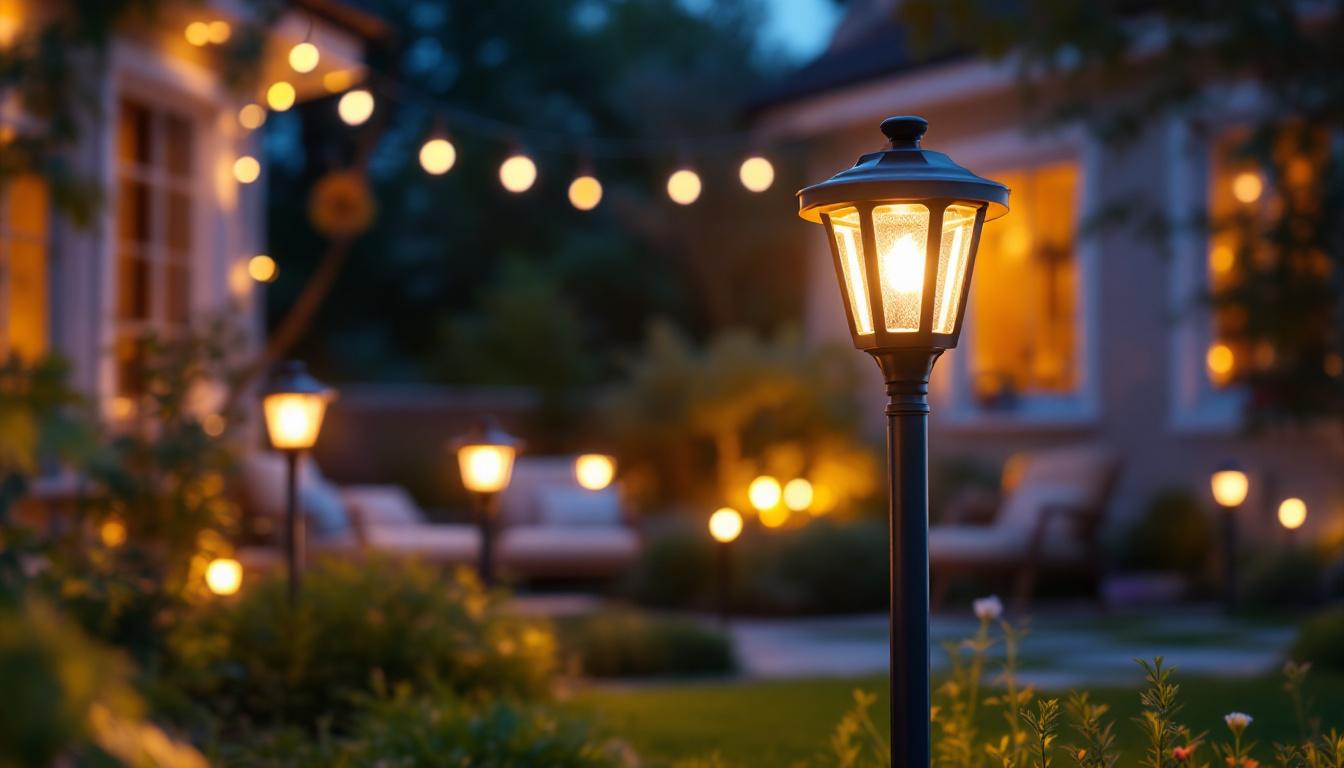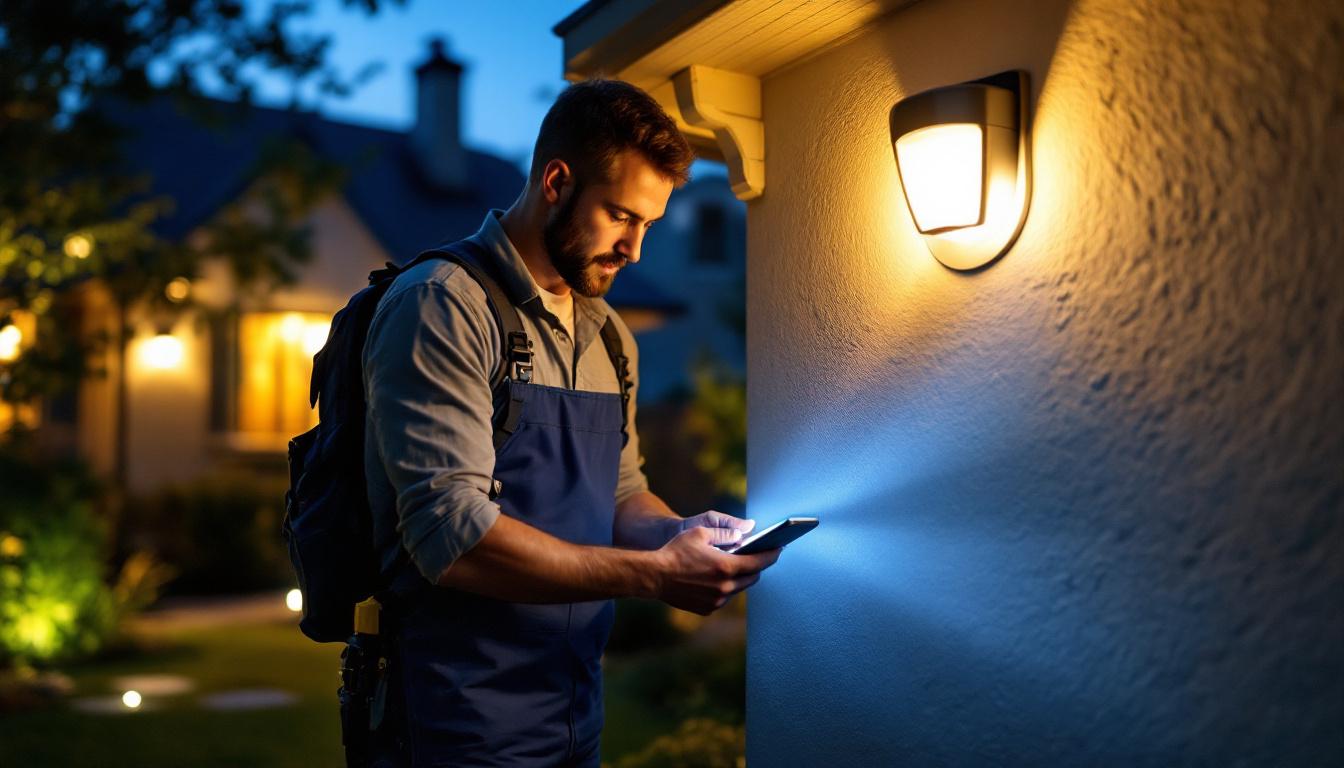
Lighting Ceiling Fixtures: Explained in 5 Minutes for Lighting Contractors
For lighting contractors, understanding ceiling fixtures is essential for delivering quality installations that meet client needs and preferences. This article aims to provide a concise overview of various types of ceiling fixtures, their applications, and important considerations for installation.
Ceiling fixtures come in a variety of styles and functionalities, catering to different lighting needs and aesthetic preferences. Below are some of the most common types that every lighting contractor should be familiar with.
Flush mount fixtures are designed to sit directly against the ceiling, making them ideal for spaces with low ceilings. These fixtures provide a clean and unobtrusive look while delivering ample illumination. They are commonly found in hallways, kitchens, and bathrooms.
When selecting flush mount fixtures, consider the wattage and lumens output to ensure adequate lighting. Additionally, the design should complement the overall decor of the space, whether it be modern, traditional, or transitional. Many flush mount fixtures now incorporate energy-efficient LED technology, which not only reduces energy consumption but also offers a longer lifespan compared to traditional bulbs. This makes them an excellent choice for eco-conscious homeowners looking to minimize their carbon footprint while still achieving a stylish look.
Pendant lights hang from the ceiling and are often used to provide focused lighting over specific areas, such as kitchen islands or dining tables. They come in various designs, from minimalist to ornate, allowing for customization based on the client’s taste.
When installing pendant lights, it’s crucial to consider the height at which they hang. A general rule of thumb is to position them about 30 to 36 inches above the surface they illuminate. This ensures both functionality and aesthetic appeal. Additionally, pendant lights can be grouped in clusters to create a dramatic effect, especially in larger spaces. Mixing different styles and heights can add visual interest and character, transforming a simple lighting solution into a stunning focal point that enhances the overall design of the room.
Chandeliers are more than just lighting fixtures; they serve as statement pieces that can enhance the ambiance of a room. Typically used in dining rooms, entryways, and living areas, chandeliers come in various styles, from classic to contemporary.
Installation of chandeliers requires careful consideration of the weight and size. Ensure that the ceiling can support the fixture, and use appropriate mounting hardware. Additionally, consider the height at which the chandelier is hung to avoid obstructing views or creating hazards. Many modern chandeliers also feature adjustable heights, allowing homeowners to customize their lighting based on the occasion or the specific needs of the space. Furthermore, chandeliers can be equipped with dimmable features, providing versatility in lighting levels and creating the perfect atmosphere for entertaining guests or enjoying a quiet evening at home. The choice of materials, such as crystal, glass, or metal, can further enhance the elegance of the chandelier, making it a true centerpiece in any room.
The type of light source used in ceiling fixtures can significantly impact the quality of light and energy efficiency. Familiarity with different light sources is essential for making informed recommendations to clients. Selecting the right lighting can enhance the ambiance of a space, improve productivity, and even affect mood. Therefore, understanding the nuances of various light sources is crucial for both aesthetic and functional purposes.
Incandescent bulbs are traditional light sources known for their warm glow and excellent color rendering. However, they are less energy-efficient compared to modern alternatives. While they may still be popular in some residential settings, many clients are opting for more energy-efficient options. The nostalgic charm of incandescent lighting often appeals to those who appreciate a classic aesthetic, making them a common choice for vintage-style fixtures and cozy environments.
When using incandescent bulbs, it’s important to inform clients about their shorter lifespan and higher energy costs. This can help them make informed decisions about their lighting choices. Additionally, clients should be made aware that incandescent bulbs emit a significant amount of heat, which can contribute to increased cooling costs in warmer months. Understanding these factors can help clients weigh the pros and cons effectively.
LED bulbs have become the go-to choice for many lighting applications due to their energy efficiency and longevity. They consume significantly less energy than incandescent bulbs and can last up to 25 times longer. This makes them an attractive option for both residential and commercial applications. The versatility of LED technology allows for a wide range of designs, from dimmable options to smart bulbs that can be controlled via smartphone apps, providing clients with customizable lighting solutions.
When recommending LED bulbs, consider the color temperature and lumens output to ensure they meet the desired lighting effect. Additionally, highlight the benefits of reduced energy bills and lower maintenance costs to clients. The ability to choose from a variety of color temperatures—from warm white to cool daylight—enables clients to create the desired atmosphere in any space, whether it’s a relaxing living room or a vibrant workspace. Furthermore, many LED products now come with eco-friendly certifications, appealing to environmentally conscious consumers.
Fluorescent and compact fluorescent lamps (CFLs) are also energy-efficient options, commonly used in commercial settings. They provide bright, even lighting and are available in various color temperatures. However, they may not be as aesthetically pleasing as other options. The distinct flicker of fluorescent lighting can sometimes be a drawback, particularly in settings where prolonged exposure is common, such as offices or classrooms.
When discussing fluorescent lighting with clients, emphasize their suitability for task-oriented spaces, such as offices and workshops. Additionally, inform them about the presence of mercury in fluorescent bulbs, which requires proper disposal. This is an important consideration for environmentally conscious clients, as improper disposal can lead to environmental contamination. Moreover, advancements in fluorescent technology have led to the development of high-efficiency models that further reduce energy consumption while maintaining brightness, making them a viable option for clients looking to balance performance and sustainability.
Proper installation is crucial for ensuring the safety and functionality of ceiling fixtures. Lighting contractors must adhere to best practices and local building codes during the installation process.
Before installation, it’s essential to assess the existing electrical wiring. Ensure that the wiring is up to code and capable of supporting the new fixture’s wattage. If necessary, upgrade the wiring to accommodate higher wattage or additional fixtures.
Always turn off the power at the circuit breaker before beginning any installation work. This ensures safety and prevents electrical hazards during the installation process.
Different ceiling fixtures require different mounting techniques. Flush mount fixtures typically use a mounting bracket that secures the fixture directly to the ceiling. Pendant lights and chandeliers may require additional support, especially if they are heavy.
When mounting fixtures, ensure that they are securely fastened to prevent accidents. Use appropriate anchors and screws for the type of ceiling material, whether it be drywall, plaster, or concrete.
Consider the height and placement of ceiling fixtures to achieve optimal lighting effects. Fixtures should be positioned to avoid creating shadows or glare, especially in task-oriented spaces.
For pendant lights, ensure they are hung at an appropriate height to provide adequate illumination without obstructing views or movement. Chandeliers should be centered over dining tables or entryways for maximum visual impact.
As energy efficiency becomes increasingly important, lighting contractors should be knowledgeable about sustainable practices and products. This not only benefits the environment but can also lead to cost savings for clients.
Look for fixtures and bulbs that have Energy Star ratings. These products meet strict energy efficiency guidelines set by the U.S. Environmental Protection Agency, ensuring that they consume less energy without sacrificing performance.
Inform clients about the benefits of choosing Energy Star-rated products, including lower energy bills and reduced environmental impact. This can enhance the contractor-client relationship by demonstrating a commitment to sustainability.
Smart lighting solutions have gained popularity among homeowners and businesses alike. These systems allow users to control lighting remotely, set schedules, and adjust brightness levels, providing both convenience and energy savings.
When discussing smart lighting options with clients, highlight the potential for increased energy efficiency and enhanced control over their lighting environment. This can be a selling point for modern installations.
Staying updated on current trends in ceiling fixtures can help lighting contractors provide clients with the latest styles and technologies. Understanding these trends can enhance design choices and improve client satisfaction.
Minimalist designs have become increasingly popular, focusing on simplicity and functionality. These fixtures often feature clean lines and understated aesthetics, making them versatile for various interior styles.
When recommending minimalist fixtures, consider how they can complement existing decor while providing effective lighting. This trend appeals to clients looking for a modern, uncluttered look.
Vintage and industrial styles are also making a comeback, often characterized by exposed bulbs, metal finishes, and rustic elements. These fixtures can add character and charm to residential and commercial spaces alike.
When working with clients interested in vintage or industrial styles, showcase options that highlight these design elements. This can create a unique and inviting atmosphere in their spaces.
Integrated LED fixtures, which come with built-in LED technology, are becoming more common. These fixtures offer a sleek appearance and eliminate the need for bulb replacements, making them a low-maintenance option.
Discuss the advantages of integrated LED fixtures with clients, including energy efficiency and longevity. This can help them understand the value of investing in modern lighting solutions.
Understanding the various types of ceiling fixtures, light sources, installation considerations, and current trends is essential for lighting contractors. By equipping themselves with this knowledge, contractors can provide valuable insights to clients, ensuring successful installations that meet both functional and aesthetic needs.
As the lighting industry continues to evolve, staying informed about new technologies and sustainable practices will enhance a contractor’s ability to deliver exceptional service. Ultimately, the goal is to create well-lit spaces that enhance the quality of life for clients while adhering to best practices in installation and design.
Ready to elevate your lighting projects with the best fixtures on the market? Look no further than LumenWholesale. We provide lighting contractors like you with the highest quality, spec-grade lighting products at prices that simply can’t be beaten. With our direct-to-contractor approach, you avoid unnecessary markups and enjoy wholesale rates that make a real difference to your bottom line. Our extensive selection not only meets but exceeds industry standards, ensuring every installation shines with reliability and performance. Plus, with free shipping on bulk orders, you can stock up on superior lighting solutions without worrying about hidden costs. Don’t compromise on quality or value—choose LumenWholesale for a seamless blend of excellence and affordability. Wholesale Lighting at the Best Value is just a click away.

Discover essential strategies and tips for lighting contractors to effectively utilize wall pack lights.

Explore the transformative role of post outdoor lighting in enhancing the aesthetics and functionality of outdoor spaces.

Discover the hidden potential of solar lamps for home lighting that even seasoned contractors might miss.

Discover how motion-activated outdoor lighting is revolutionizing efficiency for lighting contractors.